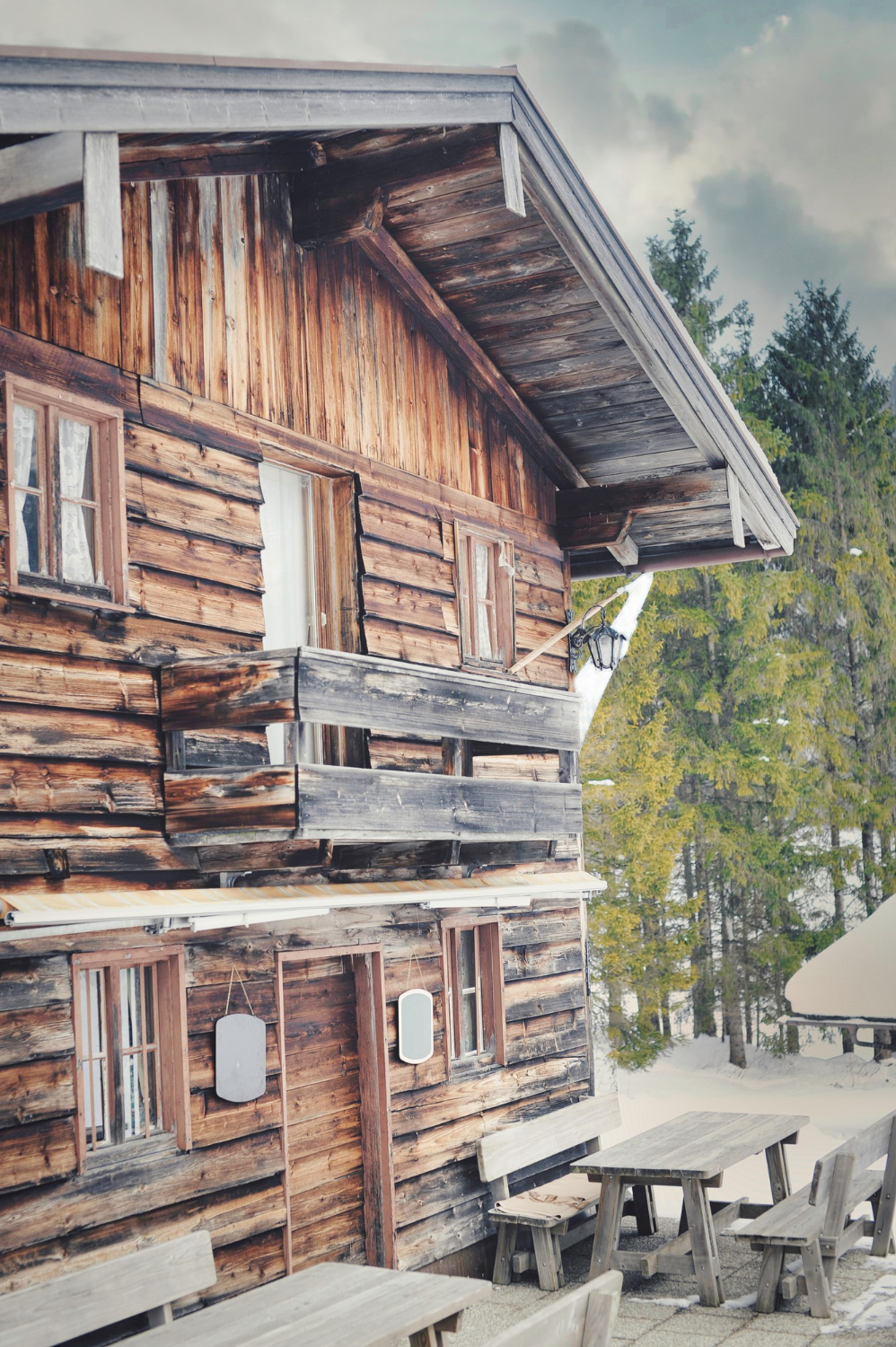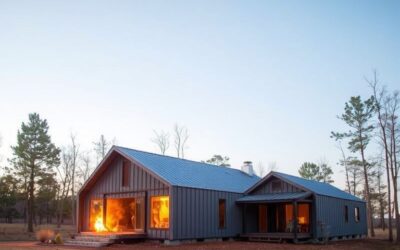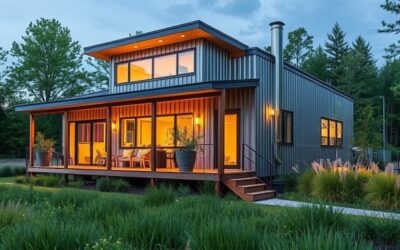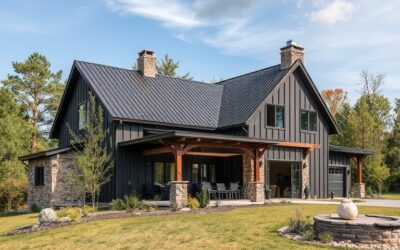Building a home? Your choice of material—steel or wood—will shape its durability, upkeep, and cost. Let’s break down the pros and cons so you can make the best decision. Two common choices are steel and wood. Each material offers its unique set of benefits and challenges, making it essential to understand how they compare before making a decision.
Steel homes are increasingly popular due to their strength, resilience, and low maintenance requirements. Steel is known for its exceptional durability, which makes it ideal for homes subjected to various weather conditions and environmental stresses. Additionally, steel is a more sustainable option, as it is often made from recycled materials and can be recycled again at the end of its lifecycle.
On the other hand, traditional wooden homes have been a staple in residential construction for centuries. Wood offers a warm and classic aesthetic that many homeowners find appealing. However, wood requires more maintenance to prevent issues such as rot, pests, and warping. Understanding these differences can help homeowners make an informed choice that aligns with their preferences and long-term goals.
Let’s compare steel homes and traditional wooden homes in detail. By examining their structural integrity, maintenance needs, environmental impact, and cost, you will better understand which type of home might be the best fit for you.
Steel vs. Wood Homes: Which is Better?
1. Structural Integrity
For unbeatable strength, steel homes outshine wood every time. Steel’s high tensile strength ensures your home can withstand the toughest conditions. Steel boasts a high tensile strength, which means it can bear heavy loads without bending or breaking. This makes steel homes particularly resistant to various stresses, including those induced by natural forces like earthquakes, strong winds, and heavy snow.
In contrast, wooden homes are more vulnerable to structural issues. Wood can warp, split, or rot over time, especially when exposed to moisture. In regions prone to hurricanes or tornadoes, wooden homes are at a higher risk of damage.
Wood also has a lower fire resistance compared to steel. Steel is non-combustible, providing an extra layer of safety for homeowners concerned about fire hazards.
Plus, steel’s uniformity ensures consistency in construction, as every piece manufactured meets exact specifications. This precision reduces the likelihood of construction errors and contributes to the overall stability of the home.
On the other hand, wood can vary in quality and may contain knots or other imperfections that can compromise the structure. Therefore, when it comes to structural integrity, steel provides a more reliable and durable option.
2. Maintenance and Durability
Maintenance and durability are key considerations for any homeowner. Say goodbye to constant upkeep. Steel homes offer hassle-free maintenance, saving you time and money over the years. Steel is impervious to common issues like termite infestations, mold, and rot. This means fewer repairs and less upkeep are needed over the life of the home, translating into cost savings and peace of mind for homeowners.
In contrast, wooden homes demand regular maintenance to prevent and address these issues. Wood is susceptible to pest infestations, which can weaken the structure and require costly extermination and repairs. Additionally, wood must be treated and sealed periodically to protect it from moisture and weather damage, adding to the maintenance workload.
The durability of steel also means it has a longer lifespan compared to wood. Steel can withstand the test of time with minimal degradation, ensuring your home remains strong and stable for many years. This longevity not only reduces the need for frequent repairs but also maintains the structural integrity and appearance of the home.
For those looking for a low-maintenance, durable option, steel homes offer clear advantages. The reduced need for ongoing upkeep and the inherent toughness of steel make it a practical and economical choice for long-term homeownership.
3. Environmental Impact and Sustainability
Build green with steel. Not only is steel recyclable, but its durability also reduces the need for frequent rebuilds, making it a top choice for eco-conscious homeowners. One of the key advantages of steel is its recyclability. Steel used in construction often contains a high percentage of recycled material and can be fully recycled at the end of its lifespan, reducing waste and the need for new raw materials. This makes steel an environmentally friendly choice for sustainable building practices.
In contrast, wooden homes rely on timber, which involves cutting down trees and impacts forest ecosystems. Although wood is a renewable resource, deforestation and the associated environmental consequences remain concerns. Additionally, wood produces more waste during construction due to the need for precise cutting and fitting.
Steel’s durability also contributes to its sustainability. A longer lifespan means less frequent need for rebuilding or major repairs, further reducing resource consumption. Plus, steel homes are often more energy-efficient due to their tight construction and effective insulation options, lowering energy use and greenhouse gas emissions over the home’s life.
By choosing steel, homeowners can reduce their environmental footprint and contribute to a more sustainable future. The combination of recyclability, durability, and energy efficiency positions steel as a smart choice for eco-conscious individuals.
4. Cost and Long-Term Investment
Invest in steel for long-term savings. While the upfront cost may be higher, steel’s durability and low maintenance translate into big savings over time. Initially, the construction cost for a steel home may be higher than for a wooden home due to the material and fabrication processes. However, this upfront expense is often offset by long-term savings in several areas.
Maintenance costs for steel homes are significantly lower. As steel requires minimal upkeep and is resistant to pests, rot, and other common issues faced by wooden homes, homeowners save on repairs and treatments. Over time, these savings can accumulate, making steel homes more economical in the long run.
Additionally, steel homes retain their structural integrity and aesthetic appeal longer, which can enhance property value. When it comes to insurance, steel homes may also benefit from lower premiums due to their resilience against fire, severe weather, and other risks.
Plus, the energy efficiency of steel homes often results in lower utility bills. Effective insulation and sealed construction help maintain indoor temperatures, reducing the need for heating and cooling. These ongoing savings further enhance the long-term investment value of a steel home, making it a financially savvy choice for homeowners.
Making the Right Choice: Steel or Wood Home?
Choosing between a steel home and a traditional wooden home involves weighing several important factors. Steel homes offer superior structural integrity, low maintenance requirements, and significant environmental benefits.
While the initial cost may be higher, the long-term savings on maintenance, energy bills, and insurance premiums can make steel homes a more economical choice over time. Additionally, the sustainability of steel contributes to a reduced environmental footprint, making it an ideal option for eco-conscious homeowners.
Wooden homes, while classic and aesthetically pleasing, require more maintenance and are more susceptible to damage from pests, weather, and fire. They also have a larger environmental impact due to deforestation and greater resource consumption.
When considering your next home, think about the balance of upfront costs versus long-term benefits. A steel home provides durability, resilience, and peace of mind, along with financial and environmental advantages.
For more information on building a durable and eco-friendly steel home, contact Wink Panels LLC today. Let our steel providers help you design a beautiful, sustainable, and long-lasting home that meets all your needs!




